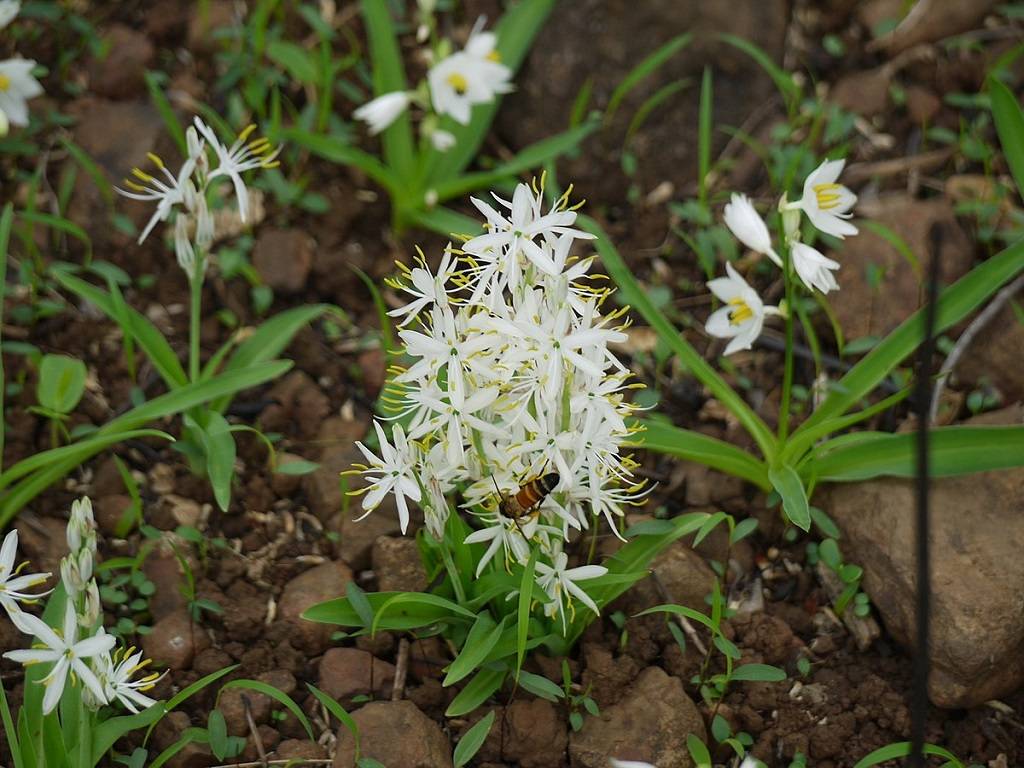
The scientific name of Safed Musli is Chlorophytum borivilianum. It is an annual herb with a height of about 1 to 1.5 feet. Flowers are 2 cm wide, star-shaped, and either yellow or green in hue. Fruits are mostly produced between July and December and range in color from green to yellow.
It is mostly found in subtropical and tropical Africa. Major Safed muslin-growing regions include Assam, Maharashtra, Andhra Pradesh, and Karnataka.
Soil & Climate Requirements
It may be cultivated in a range of soil types, from loamy to sandy soil, as long as they have sufficient drainage. It may live on muddy grounds or on the sides of mountains.
The finest results are obtained when it is cultivated in red, organically rich soil. Avoid farming where there are water locks. The ideal pH range for soil for plant development is between 6.5 and 8.5.
When growing, Safed Musli prefers an environment that is warm and humid. Its growth and yield are not appropriate for temperatures over 35°C and below 15°C. It is thought that areas receiving 50 to 150 cm of rain between June and October are ideal for their effective production.
Popular Varieties of Safed Musli
RAU, Udaipur, is responsible for maintaining and collecting the following varieties: RC-2, RC-16, RC-36, RC-20, RC-23, RC-37, and CT-1. They are discovered to have a high saponin content and good yield.
Maa Danteshwari Herbal Research Center, Chikalputi developed MDB-13 and MDB-14. This variety has a high yield, resistance to disease and fungus, and the highest levels of saponin and alkaloids.*
Rajmata Vijayaraje Scindia Krishi Vishwa Vidyalaya, Mandsaur, Madhya Pradesh released Jawahar Safed Musli 405 and Rajvijay Safed Musli 414, which are suitable for Cultivation.
Season for sowing
The best months to sow Safed Musli are June to August.
Spacing
Depending upon plant growth habits, use a spacing of 10 inches x 12 inches.
Method to sowing
seedlings being planted in the main field.
Seed rate
Propagation is often accomplished via seeds or tubers. Use 450 kg of seed per acre for the best development.
Treatment of seeds
Fungicide and growth promoter treatments are carried out to protect crops from insects, pests, and diseases. To protect crops from soil-borne diseases, treatments with Humicil@5ml in 1 liter of water or Dithiane M-45@5gm in 1 liter are used. Use seeds for planting after chemical treatment.
Weeding
Do frequent weeding, hoeing, and earthing up, and keep the field weed-free for 3 months. To keep the field free of weeds, one post-emergence weeding and two weddings are performed. If a plant's growth shows any deficiencies, the necessary spray should be applied right away.
Irrigation
Apply irrigation every 20 to 22 days for healthy growth and development. Irrigation is not necessary throughout the rainy season, but it is necessary at the right times when there are no rains. Irrigation techniques might change depending on the temperature and soil.
Plant Protection
Pest and Their Control
White grub: Grub worms eat plant roots, destroying them.
To get rid of white grub, Aldrin is applied at a rate of 10 kg per acre.
Diseases and Their Control
Red spot: This disease affects plants and results in red, orange, and yellow leaf spots.
To control red spots, Bavistin solution @1g in 1 liter of water is applied twice, 25 days of intervals.











